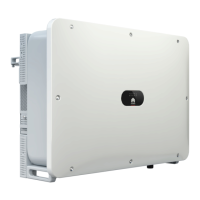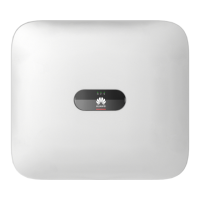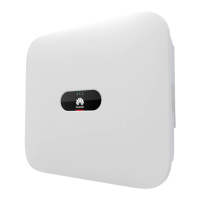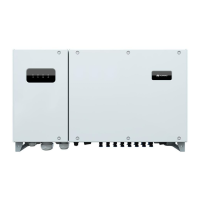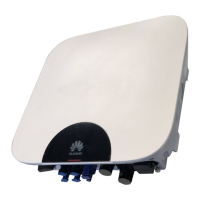Step 4 Tighten the lock nuts on the positive and negative connectors.
Step 5 Use a multimeter to measure the voltage between the positive and negative
terminals of the PV string (measurement range no less than 1100 V).
● If the voltage is a negative value, the DC input polarity is incorrect and needs
correction.
● If the voltage is greater than 1100 V, too many PV modules congured to the
same string. Remove some PV modules.
Step 6 Use an insulation resistance tester to test the insulation resistance between the
PV– cables and the ground: Add 1500 V DC voltage between the PV– cables and
the ground and check the insulation resistance.
● If the insulation resistance is greater than or equal to 1 MΩ, it is normal.
● If the insulation resistance is less than 1 MΩ, troubleshoot the cable
insulation.
Figure 5-22 Testing the insulation resistance
You can use a self-made tool to connect all PV– cables together through an adapter to
test the insulation resistance between all PV– cables of a device and the ground at a
time.
Figure 5-23 Testing the insulation resistance between all PV– cables and the
ground
Step 7 Insert the positive and negative connectors into the corresponding DC positive and
negative input terminals of the solar inverter.
SUN2000-(75KTL, 100KTL, 110KTL, 125KTL) Series
User Manual 5 Electrical Connections
Issue 15 (2023-01-31) Copyright © Huawei Technologies Co., Ltd. 69

